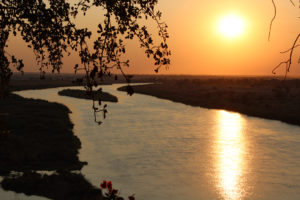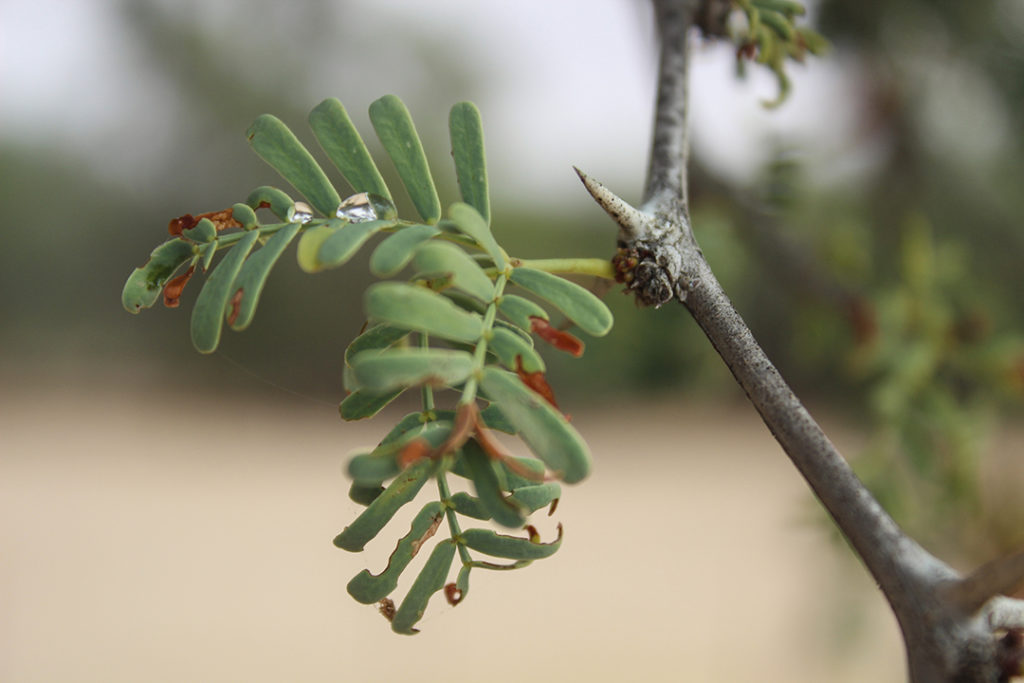“All day I’ve faced the barren waste without the taste of water, cool water.”
In many ways humans and nature are at odds despite our need for the resources it provides. As a whole, humans deplete the resources available to them. The most precious being water, due to the fact that fresh water sustains the very life we live.
75 percent of the Earth is covered in water, but of that only two percent is drinkable. On top of that, the human population is increasing exponentially. Even with recent reductions in global population growth, the latest United Nations projections put the population at 9.7 billion by the year 2050. This predicted increase of 2.4 billion people questions the efforts we are making to preserve our natural resources.

The sun sets slowly over the Kavango River. This is one of the four permanent rivers bordering Namibia.
During my time in Namibia, I have learned much about the country’s limited water resources. While the state of Texas has more permanent access to water, both regions have implemented similar practices to preserve the water present in their semi-arid climates.
As of July 22, over 700 public water supply systems in Texas were under mandatory water restrictions. In the state capital, Austin, residential and commercial lawns can only be watered weekly. Anyone not following these restrictions is subject to penalties up to $500 for residential violations and $2,000 for commercial violations. While these measures have a positive effect on preservation, in areas where water is plentiful, people remain unaware of the voluntary actions they could implement to conserve water.
In contrast to Texas, conservation is written into Namibia’s constitution. Insecure access to water caused the government to establish a state owned enterprise called NamWater, which provides water to municipalities, mining companies and private landowners.
As a consequence of piping NamWater throughout parts of the country, private landowners can apply for ‘take-off’ points. Although this is not common, I had the privilege of visiting a private farm that currently has a NamWater pipeline through its land. Farm Habis, owned by Dr. Herbert Schneider, has four ‘take-off’ points from the pipeline. This available NamWater is used during droughts at a set price, but a majority of water on the farm comes from his private boreholes at no cost.
Windhoek, the country’s capital, is the largest city in Namibia, boasting a population of approximately 300,000. Most of the city’s water is supplied by a dam that is 70 km north. Throughout the year as the water level lowers restrictions are imposed through municipal bi-laws. These include regulations similar to Austin’s, along with covering pools and washing cars with buckets instead of hoses. As the dam water decreases the prices increase per cubic meter, which are staggered to prevent the wealthy from using excessive water.

A flyer encouraging guests to conserve water hangs near the shower in one of the rooms at Popa Falls Resort.
As a part of water preservation, the city releases information that provides the dam’s current water level. This information is available through local news outlets and video billboards. In this way, residents are aware of potential water restrictions. Other communication measures include notifying foreign guests of the need to conserve water. Flyers encouraging sparse use of water were present in many of the lodges I visited.
Regulation of water is becoming common, but is it enough? As simple as it sounds, communication is one of the key factors to ensure the future availability of water. I believe Namibia’s efforts to be informative about water levels is a practice Texas would be wise to implement. Though regulation may help alleviate the problem, communicating the importance of preserving our natural resources is key. Perhaps, Bob Nolan realized the significance of water while writing the song Cool Water.
“Like me I guess he’d like to rest where there is no quest for water, cool, clear water.”


